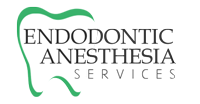What is Buffered Local Anesthetic?
The local anesthetic used in dental treatment is the medicine that provides the numbing effect that makes your tooth comfortable. Whether your tooth is causing pain and needs a root canal or is not hurting, but needs a procedure to save it, a local anesthetic is administered by your dentist. The local anesthetic or “novocaine” as it is commonly called is injected into the soft tissue, and within minutes begins to “numb” the tooth, which blocks all pain impulses. The anesthetic medicine is packaged and sold to dentists in small sterile glass carpules and typically contains a small amount of epinephrine within the enclosed solution. The epinephrine works by partially constricting or closing the blood supply near the injection site, so that the local anestheic solution is not “drawn away” by the patient’s blood supply. Placing the local anesthetic near the tooth makes the tooth stay numb long enough to complete the dental treatment and maintains the potency or profoundness of the numbing effect to keep the patient comfortable during the procedure.
One downside to a local anesthetic that contains the epinephrine vasoconstrictor is that the ph or “acid-base balance” tends to be more on the acid side of the equation as delivered by the manufacturer. This results in two minor, but manageable problems: First, as the local anesthetic is initially injected into the patient’s soft tissue, the lower “acid” ph results in a slight stinging effect felt by the patient. Due to the fast action of most local anesthetics, the surrounding tissue becomes numb quickly and subsequent injections, even at the lower ph are not felt by the patient. Secondly, also due to the lower ph, less number of anesthetic chemical molecules are initially released into the area that is being numbed. Because of this effect, multiple injections may be required and a time delay of the local anesthetic to profoundly numb an inflammed or infected tooth. The human body’s soft tissues eventually neutralizes or “buffers” the lower ph of the local anesthetic back to a neutral balance that gets and keeps a patient profoundly numb.
One would think, “Why can’t the manufactures deliver the local anesthetic solution to dentists already buffered to a neutral ph?” It would make sense for the manufacturers to do this, but unfortunately this is chemically impossible, for the local anesthetic carpules would then have an extremely short “shelf” or storage life. This would result in the manufactured carpules lasting only days instead of months, rendering them useless.
An alternative process is to buffer or neutralize the local anesthetic carpule immediately prior to its use. This allows the following benefits: (1.) The manufacturer’s normal shelf life is maintained. (2.) There is no “sting” felt by the patient when the local anesthetic solution is injected, sometimes only a slight pressure sensation. (3.) The onset of the numbing effect is almost immediate–no waiting for 20-30 minutes for it to work. (4.) The profoundness of the local anesthesia effect is markedly stronger, especially in inflammed or infected teeth. (5.) The number of carpules needed to adequately get and keep a tooth numb is reduced, therefore resulting in greater patient safety, comfort, minimal procedural interruptions for repeat injections and less post-operative pain.
How is the buffering procedure performed? It is quite simple and has been used in general medical procedures for decades. Here are the steps:
The above 5 steps are repeated for each anesthetic carpule used to numb the patient as per standard local anesthetic practice. As mentioned earlier in this article, once a local anesthetic carpule is buffered, it must be used on a patient typically within a half hour of the buffering technique, or the “shelf life” of the anesthetic carpule diminishes rapidly and must be discarded. Once practiced, the Doctor can be quite proficient in this technique and it can be easily incorporated into daily practice.
For the comfort, duration, and profoundness of our local anesthesia administered to our patients; this technique has been adopted in our practice with tremendous success. Along with topical anesthetics to numb the oral tissues prior to the first injection, our patients have marveled and complimented us at how little to no discomfort that they have experienced at our office. It has been my observation of using this technique for several years now that our patients become much more relaxed knowing that they will become profoundly numb, have a pain-free experience during their procedures. Many of our patients are amazed that they have fallen asleep in the dental chair (without any sedative drugs!) for the first time in their life and are absolutely thrilled that their dental procedure went so well for them. This buffering technique, although requires a little bit more time, effort and expense by our office is in effort to insure our 100% commitment to our patient’s comfort and safety during their Endodontic treatment.

